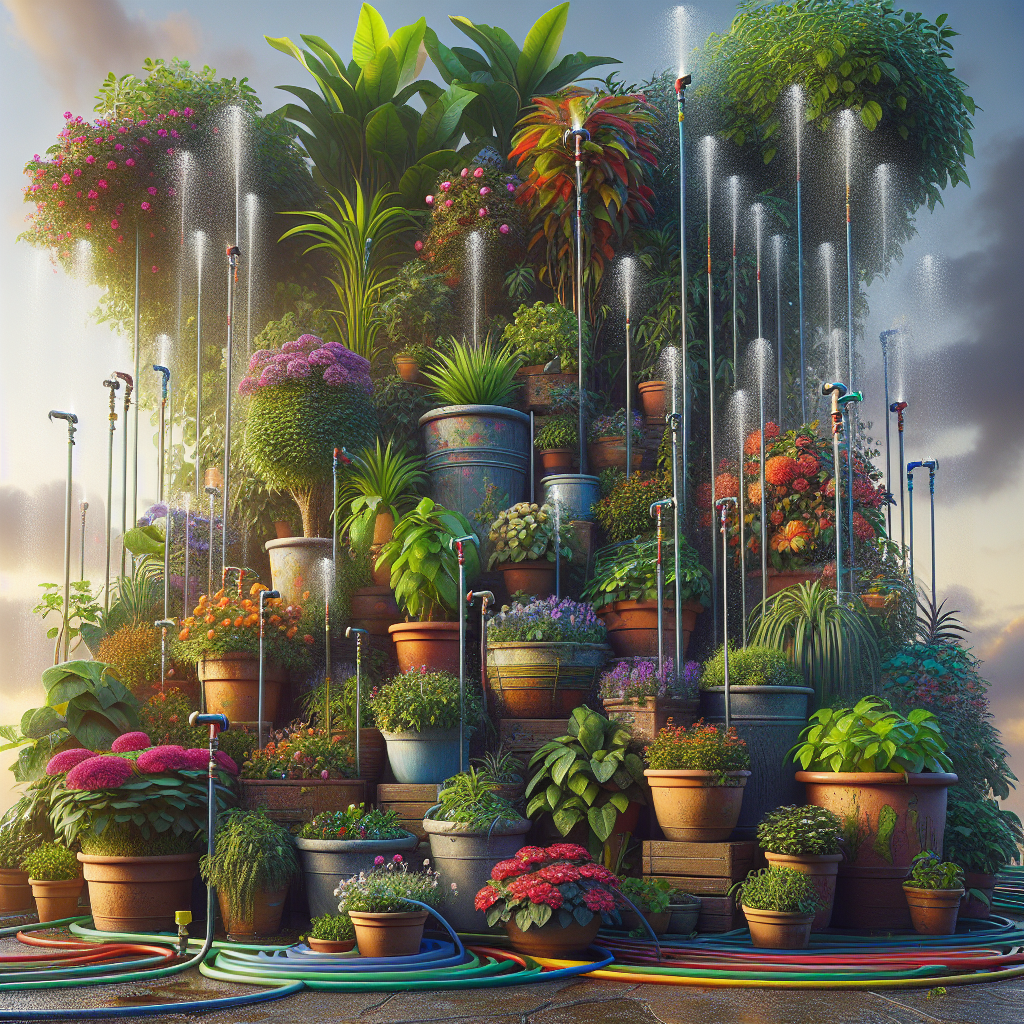Container gardening is becoming increasingly popular among urban dwellers, as it allows people who don’t have access to traditional gardens to still enjoy the benefits of growing their own plants and vegetables. However, one of the challenges that container gardeners often face is ensuring that their plants receive adequate water without overwatering. This is where slow drip irrigation comes in.
Slow drip irrigation is a method of watering plants in which water is delivered directly to the plant’s roots through a network of tubing and emitters. This allows for a slow, steady flow of water that saturates the soil evenly and efficiently, promoting healthy root growth and minimizing water waste. Slow drip irrigation systems are easy to set up and can be customized to meet the specific needs of different types of plants.
There are several reasons why slow drip irrigation is ideal for container gardening. First and foremost, slow drip irrigation ensures that plants receive water consistently and evenly. Unlike traditional watering methods like overhead sprinklers or hand watering, which can lead to uneven soil moisture levels and overwatering in some areas while underwatering in others, slow drip irrigation delivers a precise amount of water directly to the plant’s roots where it is needed most.
This precision watering technique not only promotes healthy root growth but also helps to prevent common problems associated with overwatering, such as root rot and fungal diseases. By providing plants with just the right amount of water they need, slow drip irrigation helps container gardeners avoid these issues and maintain healthier, more resilient plants.
Another benefit of slow drip irrigation for container gardening is its efficiency. Traditional watering methods can result in significant water waste due to evaporation, runoff, and overspray. Slow drip irrigation minimizes these losses by delivering water directly to the plant’s roots where it can be fully absorbed. This not only conserves water but also saves time and effort for the gardener by reducing the frequency of watering needed.
In addition to promoting healthy plant growth and conserving water, slow drip irrigation can also help container gardeners save money in the long run. While there may be an initial investment required to set up a slow drip irrigation system, the cost savings from reduced water usage, lower utility bills, and healthier plants can quickly offset this expense. Furthermore, slow drip irrigation systems are durable and long-lasting, requiring minimal maintenance once installed.
One key advantage of slow drip irrigation for container gardening is its versatility. These systems can be easily adapted to fit containers of various sizes and shapes, making them suitable for a wide range of plant types from small herbs and flowers to large vegetables and fruit trees. Additionally, slow drip irrigation systems can be automated using timers or sensors, allowing gardeners to set up a consistent watering schedule based on their plants’ specific needs.
For urban gardeners with limited outdoor space or time constraints, slow drip irrigation offers a convenient solution for maintaining healthy container gardens without constant monitoring or manual watering. With minimal effort required on the part of the gardener, slow drip irrigation systems provide a reliable way to keep plants hydrated throughout the growing season.
In conclusion, slow drip irrigation is an ideal choice for container gardening due to its precision watering capabilities, efficiency, cost-effectiveness, versatility, and convenience. By delivering water directly to plant roots at a controlled rate, slow drip irrigation promotes healthy root growth while minimizing water waste and potential problems associated with overwatering. Whether you’re growing herbs on your balcony or cultivating vegetables on your patio,
adopting a slow-drip-irrigation system could be just what you need to boost your container-garden success this season!














